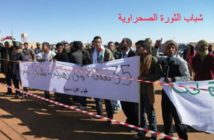By MARK MAZZETTI and ERIC SCHMITT
WASHINGTON — As Islamic militants methodically carved out a base in the desert of northern Mali over the past year, officials in Washington, Paris and African capitals struggling with military plans to drive the Islamists out of the country agreed on one principle: African troops, not European or American soldiers, would fight the battle of Mali.
But the surprise French assault last Friday to blunt the Islamists’ advance upended those plans and set off a cascading series of events, culminating in a raid on Wednesday by militants on a foreign-run gas field in Algeria. That attack threatens to widen the violence in an impoverished region and drag Western governments deeper into combating an incipient insurgency.
And yet the rush of events has masked the fact that officials in Washington still have only an impressionistic understanding of the militant groups that have established a safe haven in Mali, and they are divided about whether some of these groups even pose a threat to the United States.
Moreover, the hostage situation in Algeria has only heightened concerns that a Western military intervention could transform militant groups that once had only a regional focus into avowed enemies of the United States — in other words, that the backlash might end up being worse than the original threat.
Largely for these reasons, the Obama administration adopted a strategy over the past year to contain the Islamists in Mali until African troops were ready to confront them, rather than to challenge them directly with an American military campaign of drone strikes or commando raids.
During Congressional testimony in June, Johnnie Carson, the assistant secretary of state for African affairs, played down the terrorist threat to the United States from Mali, saying that the Qaeda affiliate operating there “has not demonstrated the capability to threaten U.S. interests outside of West or North Africa, and it has not threatened to attack the U.S. homeland.”
Some Pentagon officials have long taken a more hawkish stance, and they cite intelligence reports that fighters with ties to Al Qaeda in the Islamic Maghreb, which has a loose affiliation to the remnants of Osama bin Laden’s terrorist network, played a role in the deadly attack in September on the American diplomatic compound in Benghazi, Libya. They have pushed for targeted strikes against Islamist leaders in northern Mali, arguing that killing the leadership could permanently cripple the strength of the militants.
The administration has embraced a targeted killing strategy elsewhere, notably in Pakistan, Yemen and Somalia, after top White House, Pentagon and C.I.A. officials determined that militants in those countries were bent on attacking the United States.
Asked if fighters from Al Qaeda in the Islamic Maghreb posed such an imminent threat, Gen. Carter F. Ham, the top American commander in Africa, said, “Probably not.” But, he said in an interview, “they subscribe to Al Qaeda’s ideology” and have said that their intent is to attack Westerners in Europe and, “if they could, back to the United States.”
Defense Secretary Leon E. Panetta made it clear on Wednesday that he considered the group a serious danger. “This is an Al Qaeda operation,” he told reporters while traveling in Italy, “and it is for that reason that we have always been concerned about their presence in Mali, because they would use it as a base of operations to do exactly what happened in Algeria.”
It is too early to judge the impact of the French-led offensive in Mali, which came after an urgent plea by Mali’s government for help in repelling Islamist fighters who were rapidly moving south. But on Wednesday, some American officials said that the hostage episode in Algeria could be just the beginning of a wave of attacks against foreigners in the region. And there is a chance that if the Americans taken hostage on Wednesday are killed by their captors, American officials might reconsider their pledges not to commit ground troops to the battle.
As Islamists have tightened their grip on northern Mali over the past year, the American military has expanded spying operations in the region in the hope of gathering intelligence both about the strength of the militants and about their connections to tribal groups in Mali and elsewhere across North Africa.
According to current and former American government officials, as well as classified government cables made public by the group WikiLeaks, in recent years the military has set up a constellation of small bases in Africa for aerial surveillance missions flown by turboprop planes designed to look like civilian aircraft. One of the principal bases used for the missions in Mali is in Ouagadougou, the capital of Burkina Faso, according to one former official and the government cables.
But the surveillance missions in northern Mali have had only a limited effect. Islamist leaders have banned cellphones, closed Internet cafes and shut down cellular towers in an effort to cut the region off from the outside world. With the clock turned back decades, there are few electronic communications for American eavesdroppers to intercept.
General Ham said that it had been very difficult to get consistent, reliable intelligence about what he called a militant “safe haven” in Mali.
“It’s tough to penetrate,” he said. “It’s tough to get access for platforms that can collect. It’s an extraordinarily tough environment for human intelligence, not just ours but the neighboring countries as well.”
The surveillance flights in Africa, which are mostly run by private contractors, are part of a classified Pentagon program called Creek Sand. The Washington Post first reported about the flights last year.
After a military coup overthrew Mali’s government last year, the northern part of the country — an area larger than France — was taken over by three militant groups.
The group most worrisome to American officials is Al Qaeda in the Islamic Maghreb, which emerged out of Algeria’s civil war in the 1990s and originally was strictly focused on overthrowing Algeria’s government.
The group rebranded itself several years ago with the name AQIM, and since 2008 it has collected several million dollars in ransom payments for kidnapped Westerners in Mali, Mauritania, Niger and southern Algeria. According to a report by the Congressional Research Service released this week, the group’s influence in the region appeared to be waning before the coup last year gave it a safe haven in northern Mali.
The Qaeda affiliate controls the region in an alliance with a homegrown Islamist movement, Ansar Dine, or Defenders of the Faith, and another radical splinter group, the Mujao, or the Movement for Oneness and Jihad in West Africa. Together, these groups share the goal of imposing an extreme form of Shariah lawon the people of northern Mali.
But what remained an open question, at least until last Friday, was whether the militant threat in Mali was serious enough to justify military intervention. Now, the context of that debate has changed.
General Ham put the matter succinctly in the interview, which took place last Friday, just hours after he learned about the French incursion into Mali.
“The real question,” he said as he raced off to a secure teleconference with senior Obama administration officials, “is now what?”
Elisabeth Bumiller and Michael R. Gordon contributed reporting.
.







